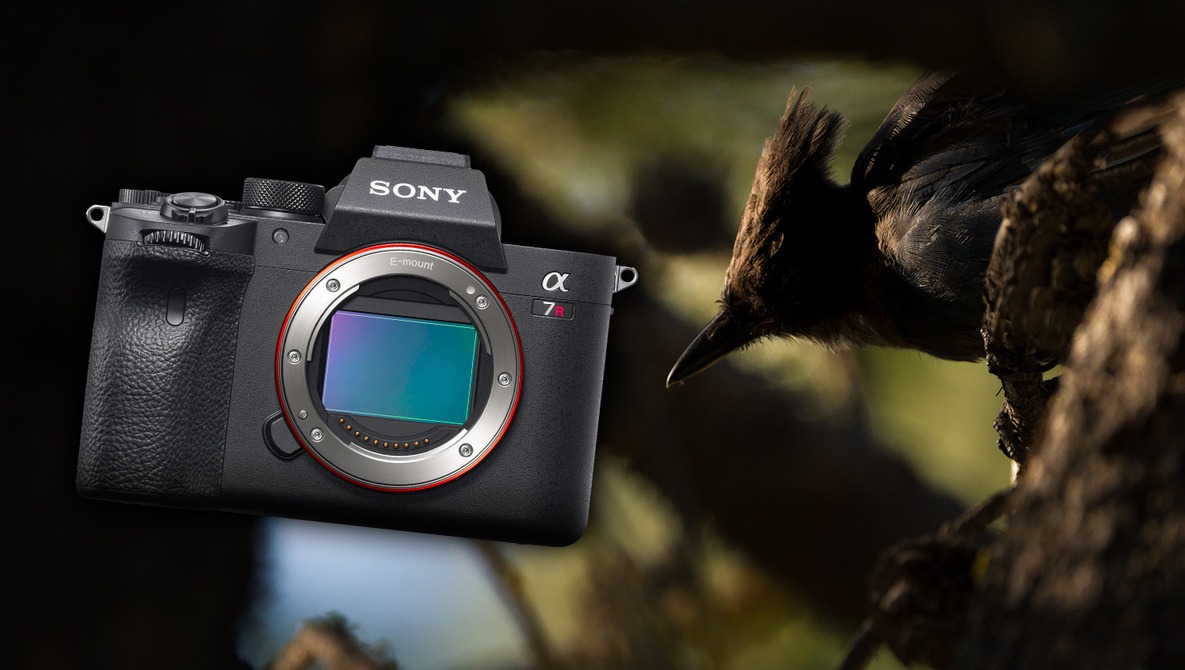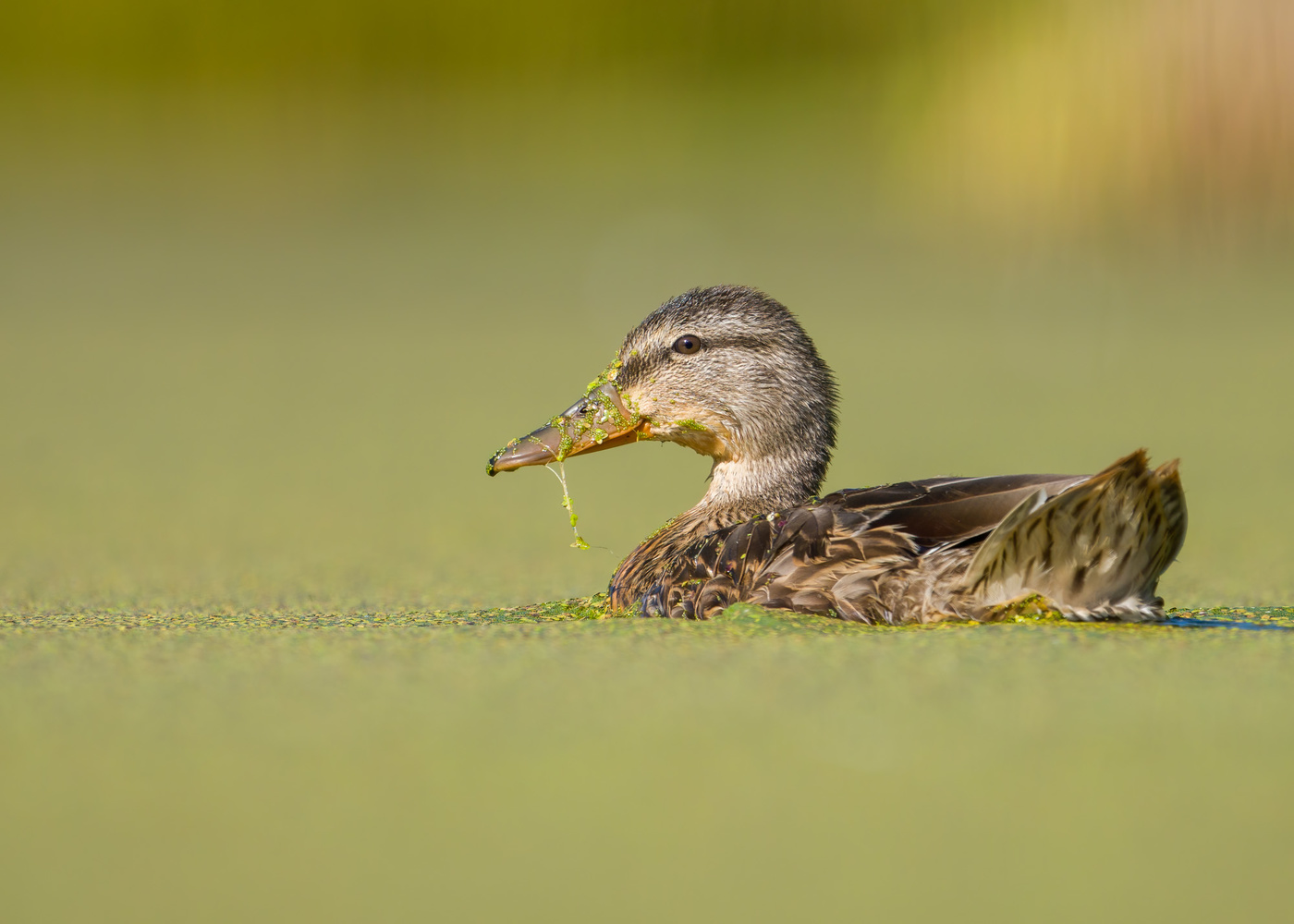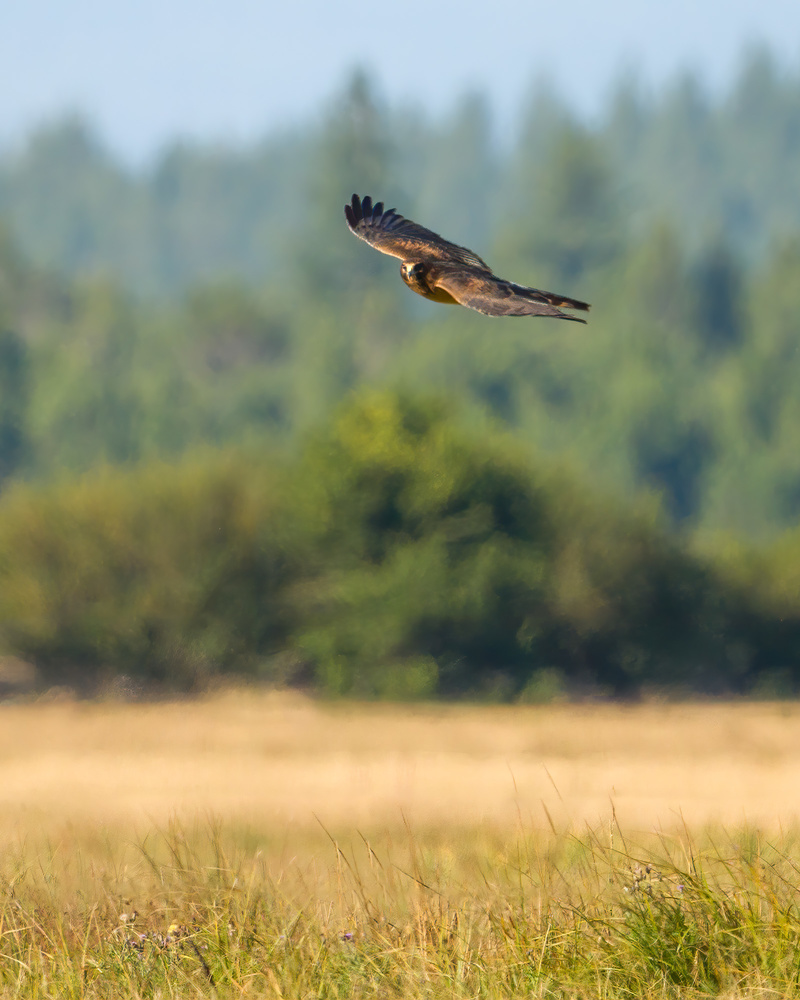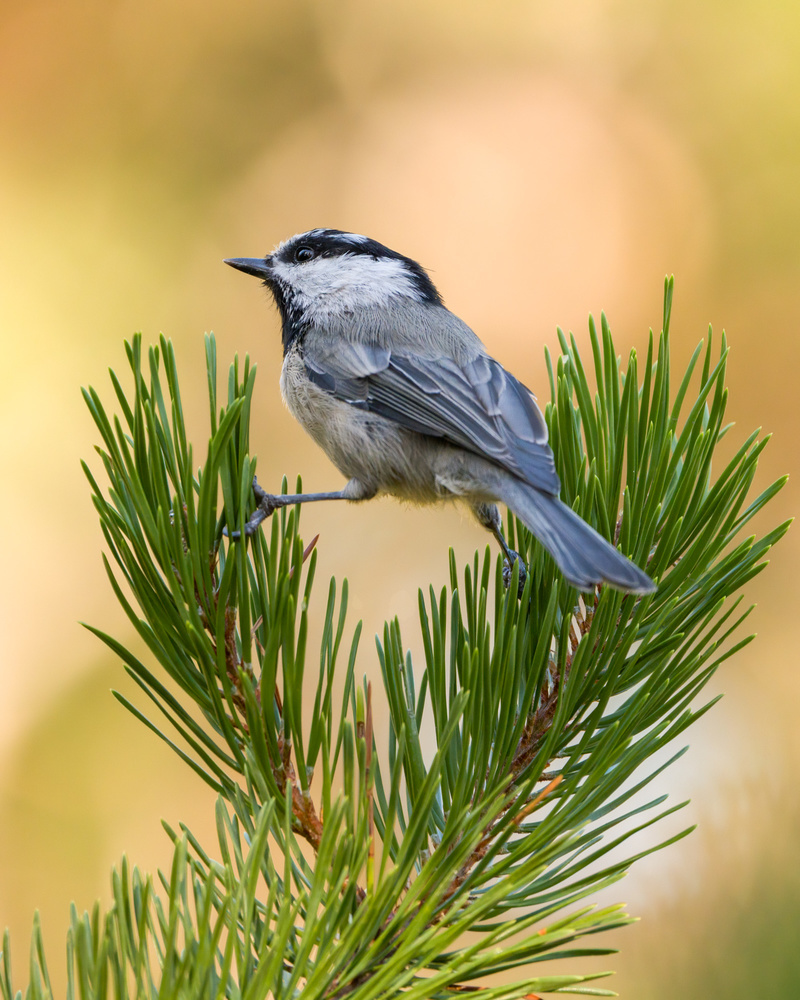Before today’s launch of the Sony a7R IV in the U.S., I had the opportunity to use the new 61-megapixel camera on a few occasions. Ultimately, these hands-on experiences led me to purchasing it for animal photography and in this article I list a few reasons behind the decision.
First, a quick disclaimer. What I write below is not in defiance against any other camera system. Every major camera brand has absolutely killer options for bird and wildlife photography. My list consists of some features and specs I identified wanting in priority over other nice things to have in a camera, and everybody’s own personal requirements will be different.
Megapixels
Hey, don’t laugh. I didn’t think a million megapixels would be a defining factor either. Yet here we are.
As all the headlines are quick to point out, the a7R IV has a 61 megapixel sensor. For some genres of photography, this is surely overkill. For me, I crop just about every single photo of wildlife I shoot to enlarge the animal in the frame. With the a7R IV, I’m never cropping down into the “danger zone” territory where the final resolution is pretty much only good for Instagram sharing.
Relatedly, one thing that really impresses me is the fact that if I photograph an animal in horizontal orientation and later decide that a vertical crop works better for the pose or composition, I’m still keeping a whopping 26.7 megapixels of image resolution in a vertical 2:3 crop. Not only can I decide to go vertical, I can even play with the vertical crop a little bit and still keep 20-plus megapixels. All this trimming, and it still beats out the original size 18-megapixel files of the Canon EOS-1D X I’m used to.
Pushing all these megapixels through the camera’s pipeline seems like it would grind the a7R IV to a halt when action picks up, but what makes all this even more impressive to me is that it matches its high megapixels with high performance. Using the camera in my typical fashion, I never experienced a hiccup in its processing that caused me to miss a shot I wanted to take. The buffer depth and its speed to clear it did not bottleneck my creation process, and that was simply unexpected. Why turn away more megapixels if it’s not hurting the process?
Crop Mode
The crop modes on previous Sony full-frame cameras always incurred such a harsh outputted resolution penalty that it was mostly ignored by everyone. Instead, most people opted to crop in post. However, the a7R IV removes the penalty by outputting large 26-megapixel files, and that’s awesome because using crop mode does have excellent advantages for bird photography.
I’m not sure if you’ve noticed this, but birds can be really small. I love photographing songbirds, and one thing that makes it challenging is how small they can appear in the frame even if it feels like you’re very close in real life. Also, have you noticed that many birds don’t like you being very close in real life? Having 500mm or 600mm of focal length sounds like more than enough for photographing a person’s DNA, but the reality is it can sometimes barely be enough to reach a songbird to fill an eighth of the frame even when you’re just 15 feet away. Crop mode gives me the ability to punch in and make the bird larger in the frame without moving. The benefit to that, aside from having a bird still there when I go to take the photo, is now my focus point (still 325 of them spanning almost edge to edge of the frame) can be much more accurate to find the tiny eye. The side benefit to me is species identification and observation without bringing binoculars.
Real-time Eye AF for Animals
This is a self-explanatory Sony feature that is not unique to the a7R IV. It’s definitely worth mentioning still because it’s quite unique in the current industry of all cameras. It’s not perfect or as reliable as Real-time Eye AF for human subjects yet, although it’s really solid for dogs and cats right now.
It worked on deer most of the time, although I’ve had multiple deer coats trick it into thinking they had eyes on their back. For birds I see it kick into action about 20 percent of the time. One thing that I only just learned recently though was that Real-time Eye AF works with any focus area. For some reason I thought the camera needed to be set to Wide area, and the eye is picked up anywhere in the frame. But it can be narrowed down too. For little birds this is great news because I can set the AF area to a small or medium flexible spot, get that spot over the bird’s head to really narrow it down, and then Real-time Eye AF takes it the whole way by giving me the eye on the head the focus point is on.
Sharpness, Tonality, and Colors
That is to say, I absolutely love the files coming out of the a7R IV. One thing I remember experiencing when reviewing the Phase One IQ3 100MP medium format back a few years ago was having photo thumbnails where my subject looked tack sharp, but when viewed full size in pure 100 megapixel glory, the focus was completely blown. So much resolution being shrunk down to a normal viewing size does interesting things like that. Now imagine what happens with a high-resolution sensor when the subject is actually tack sharp in the original full size. Shrunk down to a normal size, I’m guessing even the most sketchy of broken lenses would look like a G Master.
The same can be said for the tonality. Having advanced editing software like Adobe Photoshop smartly average out the already well-captured gradations of the a7R IV from the full photo as it’s shrunk down to a normal viewing size creates even more depth to an image. It’s something I notice from probably the most popular wildlife camera right now, the 45.7-megapixel Nikon D850 (which uses a Sony sensor), and I love seeing the same effect happening with the a7R IV.
Then there’s the color. The whole world knows that Sony was known for weak color science. Luckily, that word reached Sony and starting with the a7 III they worked on improving it. Now I can’t say how Sony treats their colors camera to camera and if it’s truly any different, but from what I saw in testing the a7R IV has the best colors I’ve ever gotten straight out of camera.
EVF
There any many upsides to an electronic viewfinder over an optical viewfinder. One of them, however, is not resolution. Part of what’s great about optical viewfinders with wildlife is that you are literally looking at the real life animal through your optics. For many people that photograph wildlife, there’s more to it than getting up before sunrise or waiting hours on end for a pretty picture; it’s the connection felt with these animals that gets us going. When I’m looking at an animal through an electronic viewfinder, I’m looking at a tiny video screen that’s really just blocking the real animal in front of me. I don’t know if that sounds like a minor difference, but it’s a big one for me.
The a7R IV blends that difference better than any previous Sony mirrorless camera with an upgraded 5.76 million dot OLED EVF. That’s 1.6 times higher than the 3.68 million dot EVFs of the a7R III and a9. I’ve held the a7R III and a7R IV, one in each hand, to look at the viewfinders side by side. The difference is noticeable. No, it’s not nearly the same thing as looking through an optical viewfinder, but the issue does disappear from my mind easier and I’m reminded less than I’m looking at a tiny screen rather than the real animal. I want those big benefits that an EVF offers, and with this camera I feel like the downside is kept to a minimum.
Conclusion
About five years ago I owned the original a7R and only photographed landscapes straight off a tripod, and what I loved most about it was that it was a high-resolution sensor with a barebones camera body built around it. All I needed in a camera outside a nice sensor was a way to control my shutter speed (with ISO and aperture almost never changing), and I’d put it to work. I remember when I first took it out of the box it looked like a toy camera compared the Nikon D800E I sold off to buy it, but with the same exact image quality coming out of it. In its fourth iteration, the a7R series has developed into something way more feature packed and higher performing than I could have ever imagined at that time.
I parted ways with Sony cameras for the past couple years as my interests continued to grow in other genres outside landscapes, and it’s amusing to me I landed right back into the system where I was five years ago but with a much more demanding list of what was needed. And still, the latest a7R is the one to meet my demands.














I bought my wife for wildlife photography; all I need to do is to make sure I can run faster than her when that bear comes around!
How much was she?
Do they sell husbands for wildlife photography too?
Why I bought the A7RIV.... because I wanted it! These articles are great, but people can always justify reasons to upgrade to the latest and greatest. I have the A7RIV ordered, hope to pick it up tomorrow, but with that said I don't find a need to justify to myself or others. I wanted it. So I bought it.
I've become what I hated! Gotta do something while waiting for a camera to arrive though. Thanks for checking it out anyway.
Your wrote an article that sparks discussion/ debate so you are doing something right! I guess for me it seems if I want something needed or not, I can come up with reasons to purchase. I do research products I buy online first and enjoy these articles but at the end of the day. If you want something you will find a reason to justify to counter parts or in this case FStoppers Community.
But why did you want it. Isn’t that the point of these, the why? Did you only want it because the version number was higher? Or was there a feature you wanted.
If you bought it because you wanted it but there’s nothing about it to make it worth wanting for you, well that would be weird.
I have reasons that I bought it, but does it really matter? Someone may say well thats a marketing gimmick or do you need that much resolution or etc etc etc. There will be a critic for every single reason someone upgrades. Well I dont feel a need to justify to anyone as we can all if we really want to make a case to ourselves or others on why we spend $4500 (Canadian) on a camera body.
You don't need to explain to anyone for what reasons you purchase something. It's your choice for YOUR reason(s) .
I was at my local Best Buy and I got a hold of the new Sony camera, Canon EOS R and compared it to my fiance's Fujifilm XT3. Got to be honest the ergonomics on the Sony stink. It's small and really uncomfortable when compared to Canon and even the XT3. Love the Canon R however. To each its own I guess.
I held the EOS R for like a minute once and it felt great. I was pretty impressed with the a7R IV still, it actually felt like a DSLR to me at least. And I'm coming off the wonderful 1DX!
I, too, hated the Sony form when I merely handled it on display at Best Buy. Soon afterward, Canon released the EOS R, which disappointment prompted my switch to Sony, anyway. I then found the Sony body more comfortable than my Canons had been. As if no longer needing to even hold the body, I now just wrap two fingers around its grip to steady the body in position.
I can't speak for those with large hands, but having average hands, I find that Sonys, like no Canon bodies, seemingly vanish in my hand—during real use. For me, there's a vast difference between holding a Sony body without a lens or with a small lens attached versus holding a Sony body with a sizable lens attached, whereby my hand on the lens is effectively enough to hold up the body, too.
the images I see appear soft.
Most photos on this site do, sorry. I assure you they aren't though ... I mean I gave up a Canon big white lens for this so I wasn't going to be swayed easily 🙂 https://www.flickr.com/photos/ryanmense/48576480156/
Say Ryan, you didn’t mention viewfinder blackout. Care to? Also what lenses hav you used with it?
The blackout is there. I’d love if it weren’t but that’s one of those things to weigh it against. I’m not upgrading (side-grading?) from the a9 so I’m not used to having blackout free shooting anyway. From my point of view it’s just more of the same in that regard.
I’ve used the 24-70 2.8 GM, FE 35 1.8, 85mm 1.4 GM, 200-600 5.6-6.3 G, and 600 f/4 GM with it. Technically have fired a couple frames with the 1.4x and 200-600 combo. Might be forgetting a lens but I think that’s it.
Non-blackout when using the live view of a camera is great for niche stuff like Astrophotos. It's hard to gade how in focus such far away details are without some live view footage.
Ryan, thanks for your impressions. Can you please tell us a bit more about the EVF lag? Is it noticeable and how does it impact wildlife photography where immediate reactions sometimes are necessary? How about panning with action with a high fps rate? Cheers! -jan
I personally didn’t notice a lag. For my typical shooting I’m looking for those quick looks that songbirds give that puts there head in profile to the camera as they twitch around everywhere, and I didn’t feel I was any less accurate than usual.
For panning with action I’ve only had about 5 opportunities with birds in flight and a couple others with running mammals. So not too many chances with the R IV. As usual, you need to drop down to 8 fps (Hi instead of Hi+) if you want the live picture in the viewfinder.
Thank you.
"I didn’t think a million megapixels would be a defining factor either. Yet here we are."
Nope, we aren't there. :)
You have 61 Mpxl, not a million megapixels. (1 quadrillion pixels)..
I was thinking a million megapixels would be a tera pixel. But most will be lost to diffraction and frame rate will be too low for wildlife. And you'd want a steady tripod.
This guy has a problem with exposure and focus ! The pictures there are flat !
For real. What an amateur. I want my money back.
I switched to Sony a few years back and have both the a7RII and RIII. I only use the 3 for my wildlife images as the 2 let me down in many ways. I have been very happy with the 3 and still use the 2 for landscape. I am actively considering buying the 4 body for the exact reasons you mention in your great article. Thanks for sharing.
Why blackout in a mirrorless camera?
Gordon Laing's YouTube review of the IV showed that over 400 ISO the resolution advantage over the R III was lost to noise.
Hi Ryan,
I've been shooting with the Canon 7D II and 100-400 II for years and am ready for an upgrade. Any thoughts on sony a7r4 v the, if it ever is available, Canon R5? Or a7r4 v a9 II - trading fps and focus speed for megapixels and more cropping potential?
thx
Morgan